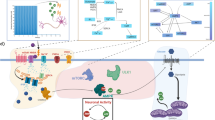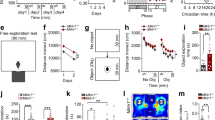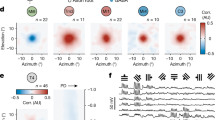Abstract
EVIDENCE indicates that glutamate-activated membrane channels (glutamate channels) are responsible for the post-synaptic potential at insect1 and crustacean2 excitatory neuromuscular junctions. They may also be involved in the regulation of pre- and postsynaptic activity in the central nervous system of vertebrates3,4. Analysis of the current noise produced by application of glutamate to excitatory synapses on locust muscle suggested that glutamate channels have a conductance of about 125 pS and a mean open time of about 2 ms (refs 5, 6). Direct measurements of the currents passing through individual acetylcholine-activated channels (ACh channels) in vertebrate muscle membrane have recently been made. The single channel conductance (about 25 pS) and kinetics correspond well with those inferred from noise analysis7,8. We report here the measurement of the currents passing through individual glutamate channels in locust muscle. The conductance of an open single channel is about 130pS. The gating kinetics are complex, and evidence is given for sudden changes in an individual channel's distribution of open and closed times.
This is a preview of subscription content, access via your institution
Access options
Subscribe to this journal
Receive 51 print issues and online access
$199.00 per year
only $3.90 per issue
Buy this article
- Purchase on SpringerLink
- Instant access to full article PDF
Prices may be subject to local taxes which are calculated during checkout
Similar content being viewed by others
References
Usherwood, P. N. R. & Cull-Candy, S. G. in Insect Muscle (ed. Usherwood, P. N. R.) 207–280 (Academic, New York, 1975).
Crawford, A. C. & McBurney, R. N. J. Physiol., Lond. 258, 205–226 (1976).
Davidson, N. & Southwick, C. A. P. J. Physiol., Lond. 219, 689–708 (1971).
Curtis, D. R., Phillis, J. W. & Watkins, J. C. Nature 183, 611–613 (1959).
Anderson, C. R., Cull-Candy, S. G. & Miledi, R. Nature 261, 151–153 (1976).
Anderson, C. R., Cull-Candy, S. G. & Miledi, R. J. Physiol., Lond. 282, 219–242 (1978).
Neher, E. & Sakmann, B. Nature 260, 799–802 (1976).
Neher, E., Sakmann, B. & Steinbach, J. H. Pflügers Arch. ges. Physiol. 375, 219–228 (1978).
Usherwood, P. N. R. Nature 223, 411–413 (1969).
Cull-Candy, S. G. Nature 258, 530–531 (1975).
Cull-Candy, S. G. J. Physiol., Lond. 276, 165–181 (1978).
Mathers, D. & Usherwood, P. N. R. Nature 259, 409–411 (1976).
Mathers, D. & Usherwood, P. N. R. Comp. Biochem. Physiol. 59C, 151–155 (1978).
Anwyl, R. & Usherwood, P. N. R. J. Physiol., Lond. 242, 86–87P (1974).
Author information
Authors and Affiliations
Rights and permissions
About this article
Cite this article
PATLAK, J., GRATION, K. & USHERWOOD, P. Single glutamate-activated channels in locust muscle. Nature 278, 643–645 (1979). https://doi.org/10.1038/278643a0
Received:
Accepted:
Published:
Issue date:
DOI: https://doi.org/10.1038/278643a0
This article is cited by
-
On the structural basis of modal gating behavior in K+ channels
Nature Structural & Molecular Biology (2011)
-
Inhibition of a cardiac sarcoplasmic reticulum chloride channel by tamoxifen
Pflügers Archiv - European Journal of Physiology (2008)
-
Single-channel recording of ligand-gated ion channels
Nature Protocols (2007)
-
Intracellular application of polyamine and polyamine amide inhibits the quisqualate-sensitive ionotropic glutamate receptor of locust (Schistocerca gregaria) muscle
Invertebrate Neuroscience (1997)
-
Neuromuscular glutamatergic and GABAergic channels
Invertebrate Neuroscience (1997)



